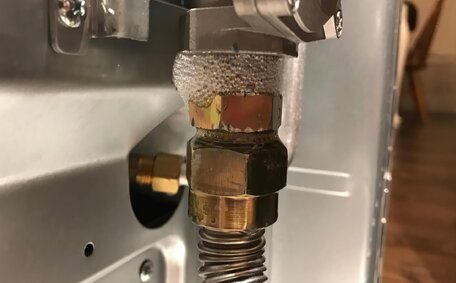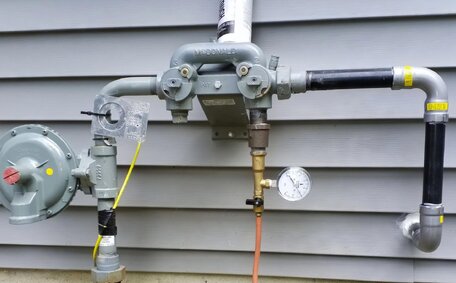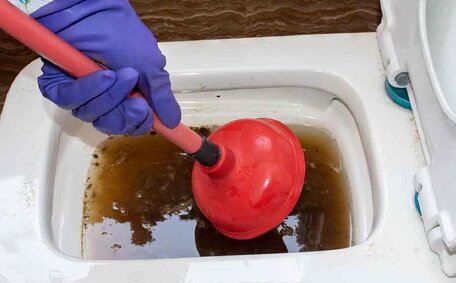Average Lifespan and Durability of Gas Pipelines
The designed useful life of a gas pipeline is typically around 50 years. However, with proper maintenance and care, pipelines can often last considerably longer without issue. There are a few key factors that influence the lifespan and durability of a gas pipeline:
- Pipe material - Plastic and steel pipes tend to last longer than iron.
- Environmental conditions - Corrosive soil, water exposure, seismic activity etc. can reduce lifespan.
- Quality of construction and installation - Proper welding, coating and burial depth are important.
- Ongoing inspection and maintenance - Catching and repairing damage early on extends lifespan.
Over half of all gas transmission pipelines in the US are more than 50 years old. The future of gas pipelines could also be impacted by trends like renewable energy and electrification of homes. But well-maintained pipelines are likely to have a useful lifespan of at least 50-70 years.
Many of these ageing pipelines continue to transport gas safely and reliably. However, old pipelines may require more vigilant monitoring and maintenance to remain durable.
Factors Influencing Gas Pipeline Lifespan
There are several key factors that can influence the durability and lifespan of a gas pipeline here in Kenthurst and across Sydney:
- Pipe materials - Plastic pipes like polyethylene often last 50+ years. Old metal pipes are more prone to corrosion and leaks.
- Installation methods - Proper welding, coating, burial depth of around 750mm protects pipes from damage.
- Environmental conditions - Sydney’s acidic soils can corrode pipes faster. Floods also increase external damage risk.
- Maintenance checks - Regular safety inspections help detect leaks early. Catching minor problems prevents bigger issues.
- Upgrades - An old pipeline would still transport gas safely and may see its lifespan extended by 30+ years through prudent repairs.
With high-quality modern materials, proper installation, protective measures for Sydney’s climate, and ongoing maintenance, a well-managed gas pipeline can remain in service for 70 years or longer before needing full replacement.
Pipeline Age and Impact on Safety
As gas pipelines age over many decades of use, there is an increased risk of safety issues and disruptions emerging. Old pipelines gradually become more vulnerable to:
- Corrosion and small leaks - Old pipe materials like bare steel are prone to corrosion damage from soil or moisture. This can cause dangerous gas leaks.
- Large leaks and ruptures - Decades of pressure cycles and fatigue cracks can suddenly rupture aged pipes.
- Collapses and sinkholes - If an old pipe’s protective coating fails, soil erosion around the pipe eventually causes collapse.
These kinds of age-related issues can disrupt gas supply to homes and businesses. Ruptures or sinkholes also pose public safety risks. According to US statistics, pipelines installed several years ago, before the 1940s, have a failure rate around 6 times higher than pipes constructed more recently after 2010.
Regular inspection and maintenance programmes aimed at detecting corrosion early can help reduce risks from gas pipelines that are no longer as resilient due to age. But very old pipelines may ultimately need full replacement to ensure ongoing safe and reliable operation. As cities update ageing infrastructure, gas pipeline longevity and safety improves.
Role of Pipeline Materials in Durability
The materials used to construct gas pipelines have a significant influence on their durability and lifespan. Pipeline integrity in Australia is governed by standards such as AS 2885, which sets specifications on allowable materials, design, construction methods and testing.
Modern gas pipelines are typically constructed from polyethylene plastic or coated steel. Polyethylene offers excellent corrosion resistance and can last over 50 years even in harsh soil environments. Fusion-bonded epoxy and polyethylene coatings also protect steel pipes from corrosion. Older pipelines may be made from unprotected steel or cast iron, which corrode faster.
Plastic pipes are immune to corrosion-based leaks or ruptures. But plastic can slowly embrittle over decades of cyclical pressure and temperature changes. Steel is stronger but still corrodes over time.
Ultimately, high-quality modern materials that meet Australian pipeline standards enable gas pipelines to remain durable for their target 50+ year lifespan.
Maintenance and Inspection of Gas Pipelines
Regular maintenance and inspection is crucial to ensuring gas pipelines remain in good working condition across their designed lifespan. Pipeline operators have rigorous programmes in place focused on:
- Corrosion monitoring - Checking pipe walls and protective coatings for corrosion damage using methods like magnetic flux leakage sensors.
- Leak surveys - Industry best practise involves surveys every 3 years in cities. Gas detectors check for minor leaks.
- Pressure testing - Pipelines are periodically pressure tested well beyond normal levels to check integrity.
- Patrols and data reviews - Operator teams physically inspect pipelines and analyse operational data to catch issues.
By conducting frequent scheduled maintenance and inspection activities, issues like corrosion, cracks, dents or leak risks can be identified early on. Catching and repairing minor damage helps prevent major ruptures further down the track. Well-maintained modern gas pipelines regularly pass safety inspections and remain fit for safe service for 50 years or longer.
Warning Signs of Pipeline Deterioration
There are a few key warning signs that a gas pipeline may be deteriorating and in need of repair or replacement:
- Frequent or difficult to trace leaks - If leaks keep occurring in a localised area despite repairs, it likely indicates an underlying issue like external corrosion damage to the pipe.
- Sinkholes or dips forming - Ground sinking along the pipeline route signals that soil has eroded around the pipe, requiring urgent stabilisation.
- Bubbles in wet areas - Bubbling water or muddy areas can mean gas is leaking from a submerged pipe.
- Dead vegetation - Gas leaks killing vegetation above pipelines is a major red flag for deterioration.
Here at Kenthurst Plumbing, our licenced gas fitting technicians have specialised equipment to identify issues with buried gas pipes before they become dangerous. We can conduct pipe leak detection surveys and advise on necessary repairs or replacement. Acting quickly on these pipeline warning signs is crucial for safety.
With advanced inspection methods and our decades of plumbing experience, we help homeowners spot and solve gas pipeline problems early. If you notice any concerning sinkholes, leaks or dead plants around your gas pipe, call Kenthurst Plumbing on 1300 349 338 for prompt assistance.
Extending the Lifespan Through Preventive Strategies
There are several preventive strategies that can help extend the usable lifespan of gas pipelines beyond the typical 50 years:
- Proper depth of burial - Deeper burial protects pipes from third-party damage. Australian Standard AS2885 specifies minimum 750mm depth.
- High-quality materials - Using polyethylene or well-coated steel that meets pipeline standards improves durability.
- Careful installation - Proper welding techniques, backfilling and compacting around pipes prevents early leaks.
- Protective wraps - Additional anti-corrosion wraps or thick conduit coating better shields pipes.
- Drainage and anchors - Effective water drainage and pipe anchors reduce movement stress on joints.
- Route planning - Carefully assessing geology, flood zones and construction risks when planning pipeline routes avoids issues.
Home and business owners should also establish an ongoing pipeline maintenance plan with qualified technicians. Regular safety inspections, leak checks, pressure monitoring and preventive repairs can optimise pipeline lifespan. By implementing protective measures during installation and maintaining vigilance, ageing pipelines can often continue transporting gas safely for 70+ years before full replacement is required.
Impact of Renewable Energy on Gas Pipeline Lifespan
The growing shift towards renewable energy sources like solar and wind power could substantially impact the lifespan and long-term relevancy of natural gas pipelines. As more homes and businesses adopt renewables for their energy needs, demand for gas may decline - shortening the usable lifespan of pipelines.
A clear example of this can be seen with Western Australia’s Dampier-to-Bunbury pipeline. Originally expected to have a 50+ year lifespan, the operators estimate it may be decommissioned 15 years early in 2035. This shortened lifespan is largely driven by solar and battery uptake reducing gas power generation demand in the state.
Other gas pipelines across Australia could face similar outcomes in coming decades if renewable energy and electrification of homes continues rising exponentially. Even relatively new pipelines may transport decreasing volumes of gas over time - making their large capital costs unjustifiable earlier than anticipated.
However, experts predict natural gas will continue playing an important role in Australia’s energy mix - especially for industrial use. Well-maintained urban gas pipelines are still likely to have 50+ year lifespans despite renewables growth.
But operators may need to assess usage trends carefully and plan early for potential decommissioning or reuse if demand declines faster than expected locally.
Decommissioning and Replacing Aging Pipelines
When a gas pipeline reaches the end of its usable lifespan, a complex process of decommissioning and replacement begins. There are financial, legal, environmental and community safety considerations throughout this process.
Decommissioning involves permanently closing down the pipeline by purging all gas and capping endpoints. Companies must submit decommissioning applications to regulators outlining strategies for cleaning, dismantling and removing old pipeline materials. Strict procedures are followed to ensure no residual gas or chemicals contaminate soil or waterways.
Replacing ageing pipelines is extremely costly. But leaving dysfunctional pipelines in the ground also poses public safety risks from leaks, explosions or sinkholes. New pipeline routes are assessed considering environmental impacts and community feedback before construction begins.
With careful planning and consultation, ageing gas pipelines can be safely decommissioned and replaced while protecting local communities and environments.
Shortened lifespans may force operators to decommission pipelines earlier than expected. Yet gas will likely maintain an important role in Australia’s energy mix. The future of gas pipelines is also uncertain given the rise of renewable energy.






